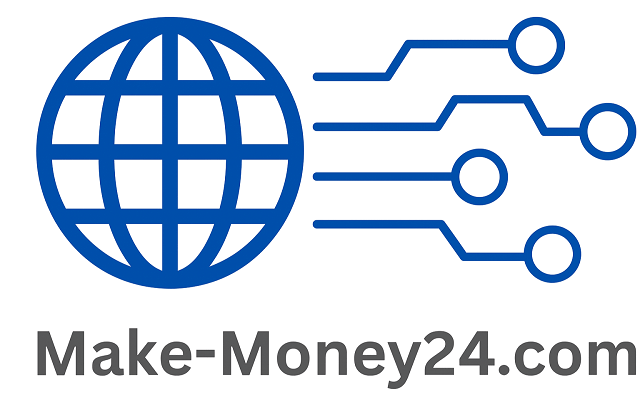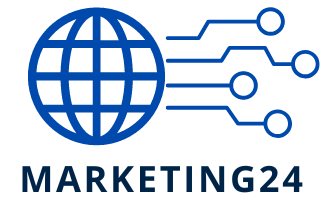The rapid evolution of AI automation is set to redefine industries in 2025, with advancements in machine learning, robotics, and natural language processing leading the charge. Businesses are increasingly adopting AI-driven workflows to enhance efficiency, reduce costs, and minimize human error. In manufacturing, for instance, smart factories powered by AI are achieving unprecedented levels of precision and productivity, with predictive maintenance systems reducing downtime by up to 30%. Meanwhile, in customer service, conversational AI has matured to the point where chatbots and virtual assistants can handle complex queries with near-human accuracy, drastically improving response times and customer satisfaction. These innovations are not just incremental improvements—they represent a fundamental shift in how work is performed across sectors.
One of the most transformative developments in 2025 is the integration of AI with edge computing, enabling real-time decision-making without relying on centralized cloud systems. This leap is particularly impactful in healthcare, where AI-powered diagnostic tools at the edge can analyze medical images or patient data instantly, improving early detection rates for diseases like cancer. Similarly, autonomous vehicles are benefiting from edge AI, processing vast amounts of sensor data locally to make split-second navigation decisions, making self-driving cars safer and more reliable. The financial sector is also undergoing a revolution, with AI algorithms now capable of detecting fraudulent transactions in milliseconds while simultaneously personalizing investment strategies for individual clients. These applications highlight how AI automation is moving beyond simple task automation to enable entirely new capabilities.
However, the rise of AI automation in 2025 isn’t without challenges. Workforce displacement remains a pressing concern, as AI systems take over roles traditionally performed by humans, from data entry to mid-level analysis. Companies and governments are grappling with the need for large-scale reskilling initiatives to prepare workers for AI-augmented jobs. Ethical considerations, such as algorithmic bias and data privacy, are also coming to the forefront, prompting stricter regulations around AI deployment. Despite these hurdles, the overall trajectory is clear: AI automation is becoming deeply embedded in the fabric of global industries, driving innovation at an unprecedented pace. Organizations that fail to adapt risk being left behind in this new era of intelligent automation.
Key Industries Transformed by AI Automation
The healthcare industry has undergone a profound transformation through AI automation, revolutionizing patient care, diagnostics, and administrative efficiency. AI-powered diagnostic tools, such as image recognition algorithms, now assist radiologists in detecting anomalies in X-rays and MRIs with unprecedented accuracy, reducing human error and speeding up diagnosis times. Beyond diagnostics, AI-driven predictive analytics help hospitals optimize resource allocation, from staff scheduling to inventory management, ensuring that critical supplies are available when needed. Administrative tasks, such as billing and patient record management, have also been streamlined through natural language processing (NLP) systems, freeing up healthcare professionals to focus on patient care. These advancements not only enhance operational efficiency but also improve patient outcomes by enabling faster, more personalized treatment plans.
In the financial sector, AI automation has reshaped everything from fraud detection to customer service, delivering significant cost savings and improved accuracy. Machine learning algorithms analyze vast datasets in real-time to identify fraudulent transactions, flagging suspicious activity far quicker than traditional methods. Robo-advisors, powered by AI, provide personalized investment recommendations at scale, democratizing access to wealth management services for a broader audience. Additionally, chatbots and virtual assistants handle routine customer inquiries, reducing wait times and operational costs for financial institutions. AI-driven risk assessment models also enable lenders to make more informed decisions, minimizing defaults while expanding credit access to underserved populations. These innovations are not only boosting efficiency but also fostering greater trust and transparency in financial services.
Manufacturing and logistics are other key industries where AI automation is driving monumental shifts in productivity and supply chain management. Smart factories leverage AI-powered robotics and IoT sensors to monitor equipment health, predict maintenance needs, and minimize downtime, significantly reducing operational costs. In logistics, route optimization algorithms analyze traffic patterns, weather conditions, and delivery windows to ensure timely shipments while cutting fuel consumption. Warehouse automation, including AI-guided picking systems, has drastically improved inventory accuracy and order fulfillment speeds. Even in agriculture, AI-driven precision farming techniques optimize irrigation, fertilization, and pest control, maximizing crop yields with minimal environmental impact. Across these sectors, AI automation is proving to be a game-changer, unlocking new levels of efficiency and sustainability that were previously unattainable.
The Pros and Cons: Balancing Efficiency and Ethics
AI automation offers undeniable advantages in boosting efficiency across industries. By handling repetitive tasks with precision and speed, AI systems can process vast amounts of data far quicker than human workers, reducing operational costs and minimizing errors. In sectors like manufacturing, healthcare, and finance, AI-driven solutions have streamlined workflows, improved accuracy in diagnostics, and enhanced customer service through chatbots and automated support systems. These advancements allow businesses to reallocate human resources to more complex, creative tasks, ultimately driving innovation and productivity to new heights.
However, the rise of AI also raises significant ethical concerns, particularly regarding job displacement. As machines take over roles traditionally performed by humans, many workers face the risk of unemployment or the need to reskill for entirely new professions. This shift could exacerbate economic inequality, particularly for low-skilled workers who may struggle to adapt. Additionally, AI systems trained on historical data can inherit and perpetuate societal biases, leading to discriminatory outcomes in hiring, lending, and law enforcement. Without careful oversight, these biases can reinforce systemic inequalities rather than mitigate them, undermining the fairness AI is often expected to uphold.
Balancing efficiency with ethics requires proactive measures, including transparent AI development, robust regulatory frameworks, and continuous bias audits. Policymakers and businesses must collaborate to ensure that AI adoption does not come at the expense of human dignity or social equity. Investments in education and retraining programs can help displaced workers transition into new roles, while diverse teams designing AI systems can reduce the risk of embedded biases. Ultimately, the responsible integration of AI demands not just technological innovation but also a commitment to ethical accountability, ensuring that progress benefits society as a whole rather than a privileged few.
AI Tools You Should Know About in 2025
The AI landscape in 2025 is brimming with revolutionary tools designed to streamline workflows and boost efficiency across industries. One standout is NeuroFlow, an AI-powered project management assistant that automates task delegation, tracks progress in real-time, and predicts project bottlenecks before they occur. Using advanced natural language processing, NeuroFlow interprets complex team communications and turns them into actionable tasks, reducing meeting times by up to 40%. Another game-changer is DataSage, an AI-driven analytics platform that transforms raw data into strategic insights with minimal human input. Its self-learning algorithms adapt to industry-specific trends, offering predictive modeling that helps businesses stay ahead of market shifts. For creative professionals, Artifex Studio redefines content creation with its generative design capabilities, producing high-quality visuals, videos, and even 3D models based on simple text prompts.
In the realm of customer engagement, ChatGenius 2.0 has set a new standard for AI chatbots, offering hyper-personalized interactions that mimic human empathy while handling thousands of queries simultaneously. Unlike earlier iterations, this version integrates seamlessly with CRM systems, learning from past interactions to refine future responses. Meanwhile, CodePilot X is transforming software development by automating up to 70% of routine coding tasks, allowing developers to focus on innovation rather than syntax. Its context-aware suggestions and error-detection algorithms have made it indispensable for tech teams. For small businesses, BizBoost AI levels the playing field by providing enterprise-grade marketing automation—crafting targeted campaigns, optimizing ad spend, and even generating performance reports—all through an intuitive, no-code interface.
Healthcare and education are also witnessing AI breakthroughs with tools like MediScan AI, which assists doctors in diagnosing complex conditions by cross-referencing patient data with global medical research in seconds. Similarly, EduMind personalizes learning experiences by analyzing student performance and adapting lesson plans in real-time, making education more accessible. On the security front, SentinelAI offers next-gen threat detection, using behavioral analysis to identify cyber threats before they escalate. These tools exemplify how AI in 2025 isn’t just about automation but about enhancing human potential—whether by freeing up time for strategic thinking, fostering creativity, or enabling faster, data-driven decisions. As adoption grows, businesses that leverage these innovations will undoubtedly gain a competitive edge.
The Future of AI Automation: Predictions and Possibilities
The future of AI automation promises to reshape industries in ways we’re only beginning to comprehend. Experts predict that by 2030, AI will automate up to 30% of current work tasks across major sectors, from manufacturing to professional services. This transformation won’t simply replace human workers but rather redefine job roles, creating new opportunities that blend human creativity with machine efficiency. Emerging technologies like self-improving AI systems and quantum machine learning could accelerate automation capabilities beyond current expectations, potentially solving complex problems in healthcare diagnostics, climate modeling, and logistics optimization that have long eluded traditional approaches.
One of the most significant trends on the horizon is the development of “autonomous AI” systems capable of making complex decisions with minimal human oversight. These systems will move beyond today’s narrow AI applications to handle multifaceted challenges across multiple domains simultaneously. For instance, future AI might manage an entire supply chain ecosystem, dynamically adjusting production, distribution, and inventory based on real-time global data streams. The integration of AI with other exponential technologies like IoT, blockchain, and advanced robotics will create intelligent networks where automated systems communicate and collaborate at unprecedented scales, potentially giving rise to self-organizing industrial ecosystems.
Ethical considerations and governance frameworks will become increasingly critical as AI automation advances. The possibility of artificial general intelligence (AGI) – systems with human-like reasoning abilities – raises profound questions about control, accountability, and the very nature of work. Some futurists envision a world where AI handles routine tasks while humans focus on creative, strategic, and interpersonal activities, potentially leading to shorter work weeks and redefined concepts of productivity. However, this optimistic scenario depends on careful policy planning, continuous education systems that help workforces adapt, and international cooperation to ensure AI automation benefits society broadly rather than concentrating power and wealth. The coming decade will likely see these philosophical and practical challenges become central to discussions about our automated future.
“`

